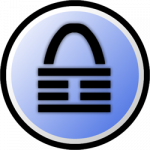 You’re living more of your life and doing more of your business on the Internet. You’re paying bills with online banking, checking your credit cards on the web, and shopping at several dotcom stores. Every one of those sites may require you to have an account with a username and password. To make it easy, you’re using the same password for all the sites (I hope not). Or you use several passwords but there are so many to remember, so you put them all in a little text file on your desktop or write them on a post-it note. Does this sound like you?
You’re living more of your life and doing more of your business on the Internet. You’re paying bills with online banking, checking your credit cards on the web, and shopping at several dotcom stores. Every one of those sites may require you to have an account with a username and password. To make it easy, you’re using the same password for all the sites (I hope not). Or you use several passwords but there are so many to remember, so you put them all in a little text file on your desktop or write them on a post-it note. Does this sound like you?
You have decided to digitized your legal documents to save space and to speed up searching. Or maybe you have taken the step to receive all or some of your documents, like bank statements, in digital format. You scan and save everything onto your hard drive. Does this also sound like you?
You have anti-virus and anti-spyware software running on your computer and doing frequent scans, weekly and maybe even daily. (If you don’t, see my post on free anti-virus and anti-spyware software). Hopefully, the software will protect your computer from having unscrupulous programs installed, which for example, could capture your keyboard inputs when you are logging into your banking website. But what prevents someone from stealing your computer (especially laptops) and reading your password text file and digitized legal documents? Would you be one of the many who can only say “nothing”?
Don’t lose hope. There are free software solutions which can help you protect your passwords and digitized documents. (Thanks very much to the software developers who donate their time and efforts to create these free tools!) Below are the two free programs that I use to secure my information. They work on both Windows and Mac OS X.
The first is Keepass which is a simple-to-use, secured password keeping utility. It is a lightweight text editor that saves any inputted text to a single, encrypted file. The file will grow if you add more text. Just run Keepass and input your Keepass password (which you set when creating the file) to view the encrypted text file. Keepass will lock itself if you don’t use it after a certain amount of inactivity time (by default, I think it is one minute). I use Keepass to keep information that I need to access often, such as passwords and other textual data. With Keepass, I can use a different password for each website and the passwords can be gibberish. (Please make sure to use a long Keepass password and practice typing it so you won’t forget.)
The second is TrueCrypt which can be considered as a secured, virtual hard drive utility. You can use TrueCrypt to create an encrypted file which can appear as a virtual hard drive. The virtual hard drive will show up in “My Computers” as just another drive letter. Any files you put into that virtual drive is stored in the encrypted file. The size of encrypted file cannot grow; so when you first create it, please pick a size which will fit your secure storage needs. (If you run out of space, just create use TrueCrypt to create a larger file, open the old and new files as virtual drives, and copy everything over to the new, larger drive.) Because the encrypted file acts like a hard drive, you can create folders and subfolders inside it to organize your files. Like Keepass, TrueCrypt requires a password to unencrypt the file and open it as a virtual hard drive. I use TrueCrypt as a secure storage for all my digitized documents.
Update: I’ve been using Truecrypt to encrypt a whole partition as NTFS. (I’ve also encrypted with FAT32 when I need Mac OS X to have read-write access.) There is a slow write issue that is caused by a combination of TrueCrypt with different storage controllers. For example, on my current desktop with an Intel C600+/C220+ SATA controller, encrypted write speed is limited to 20MBps to my SSD. This is very bad because normally I get unencrypted 400MBps write speed. (Veracrypt should have the same issue because it uses the Truecrypt code base.) I’m considering giving up cross-platform support by switching to Windows BitLocker.
Well, that’s it. As the doctor would say, that wasn’t too bad, right?
